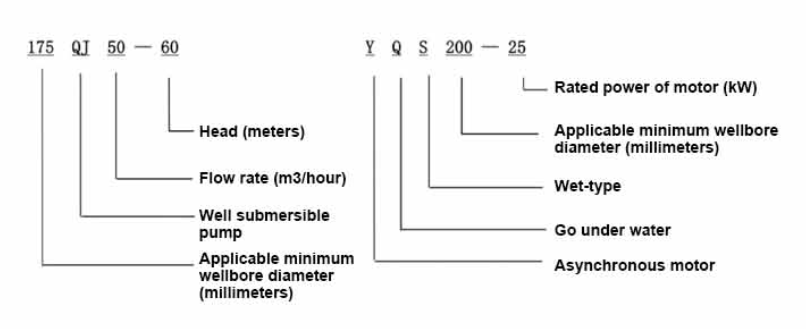Aug . 01, 2024 10:31 Back to list
Battery-powered submersible pumps for efficient water lifting and drainage in various applications
Battery Operated Submersible Pumps A Versatile Solution for Fluid Management
In recent years, the demand for efficient and portable pumping solutions has surged across various industries. One such innovation that has garnered attention is the battery-operated submersible pump. These pumps are designed for underwater use, making them ideal for draining water from flooded areas, transferring liquids, or even providing irrigation solutions in remote locations. This article explores the features, applications, and benefits of battery-operated submersible pumps.
What is a Battery Operated Submersible Pump?
A battery-operated submersible pump is a type of pump that is specifically designed to operate underwater and is powered by rechargeable batteries rather than traditional electrical systems. These pumps typically consist of a motor, impeller, and a casing that protects the internal components from water damage. The battery provides the necessary energy to drive the motor, allowing the pump to move fluids efficiently in various environments.
Features of Battery Operated Submersible Pumps
1. Portability One of the standout features of these pumps is their portability. Without the need for a power source or electrical cords, they can be easily transported and deployed in various locations. This makes them particularly useful for emergency responses where flooding might occur.
2. Ease of Use Battery-operated submersible pumps are typically designed for user-friendly operation. Many models come with a simple on/off switch and are lightweight, allowing even those with minimal technical knowledge to operate them.
3. Versatility These pumps can handle a variety of liquids, including clean water, muddy water, and even some light industrial fluids. This versatility makes them suitable for multiple applications across different sectors.
4. Durability Constructed with robust materials, battery-operated submersible pumps are designed to withstand harsh conditions. Many models feature corrosion-resistant casings to ensure longevity, making them suitable for prolonged underwater use.
Applications
Battery-operated submersible pumps have a wide range of applications
battery operated submersible pump

- Emergency Flood Relief In times of natural disasters, these pumps are invaluable for quickly removing water from flooded homes and businesses. Their portability allows first responders to reach affected areas swiftly.
- Irrigation in Remote Areas Farmers in rural areas can utilize these pumps to draw water from wells or rivers for irrigation without the need for extensive infrastructure.
- Aquaculture These pumps are often used in fish farms to maintain water levels and ensure a continuous supply of oxygenated water, promoting healthy aquatic life.
- Construction Sites Battery-operated submersible pumps are also effective in construction environments for dewatering trenches and foundations, facilitating ongoing work even in wet conditions.
Benefits
The advantages of battery-operated submersible pumps are evident
- Cost-Effective By eliminating the need for extensive electrical installations, these pumps can provide significant savings in setup costs.
- Environmentally Friendly Many modern battery-operated pumps use lithium-ion technology, which is more environmentally friendly compared to traditional fuel-powered pumps.
- Quiet Operation Compared to gas-powered pumps, battery-operated versions operate much quieter, making them suitable for residential areas and providing a less disruptive option for nearby inhabitants.
In conclusion, battery-operated submersible pumps represent a significant advance in fluid management technology. Their portability, ease of use, and versatility make them indispensable tools in various applications, from emergency relief efforts to agricultural irrigation. As technology advances, we can expect these pumps to become even more efficient and powerful, solidifying their place as a vital resource in many industries. Whether for personal use or large-scale application, battery-operated submersible pumps offer a reliable and effective solution for managing liquids in challenging environments.
-
Submersible Water Pump: The Efficient 'Power Pioneer' of the Underwater World
NewsJul.01,2025
-
Submersible Pond Pump: The Hidden Guardian of Water Landscape Ecology
NewsJul.01,2025
-
Stainless Well Pump: A Reliable and Durable Pumping Main Force
NewsJul.01,2025
-
Stainless Steel Submersible Pump: An Efficient and Versatile Tool for Underwater Operations
NewsJul.01,2025
-
Deep Well Submersible Pump: An Efficient 'Sucker' of Groundwater Sources
NewsJul.01,2025
-
Deep Water Well Pump: An Efficient 'Sucker' of Groundwater Sources
NewsJul.01,2025
-
 Submersible Water Pump: The Efficient 'Power Pioneer' of the Underwater WorldIn the field of hydraulic equipment, the Submersible Water Pump has become the core equipment for underwater operations and water resource transportation due to its unique design and excellent performance.Detail
Submersible Water Pump: The Efficient 'Power Pioneer' of the Underwater WorldIn the field of hydraulic equipment, the Submersible Water Pump has become the core equipment for underwater operations and water resource transportation due to its unique design and excellent performance.Detail -
 Submersible Pond Pump: The Hidden Guardian of Water Landscape EcologyIn courtyard landscapes, ecological ponds, and even small-scale water conservancy projects, there is a silent yet indispensable equipment - the Submersible Pond Pump.Detail
Submersible Pond Pump: The Hidden Guardian of Water Landscape EcologyIn courtyard landscapes, ecological ponds, and even small-scale water conservancy projects, there is a silent yet indispensable equipment - the Submersible Pond Pump.Detail -
 Stainless Well Pump: A Reliable and Durable Pumping Main ForceIn the field of water resource transportation, Stainless Well Pump has become the core equipment for various pumping scenarios with its excellent performance and reliable quality.Detail
Stainless Well Pump: A Reliable and Durable Pumping Main ForceIn the field of water resource transportation, Stainless Well Pump has become the core equipment for various pumping scenarios with its excellent performance and reliable quality.Detail
